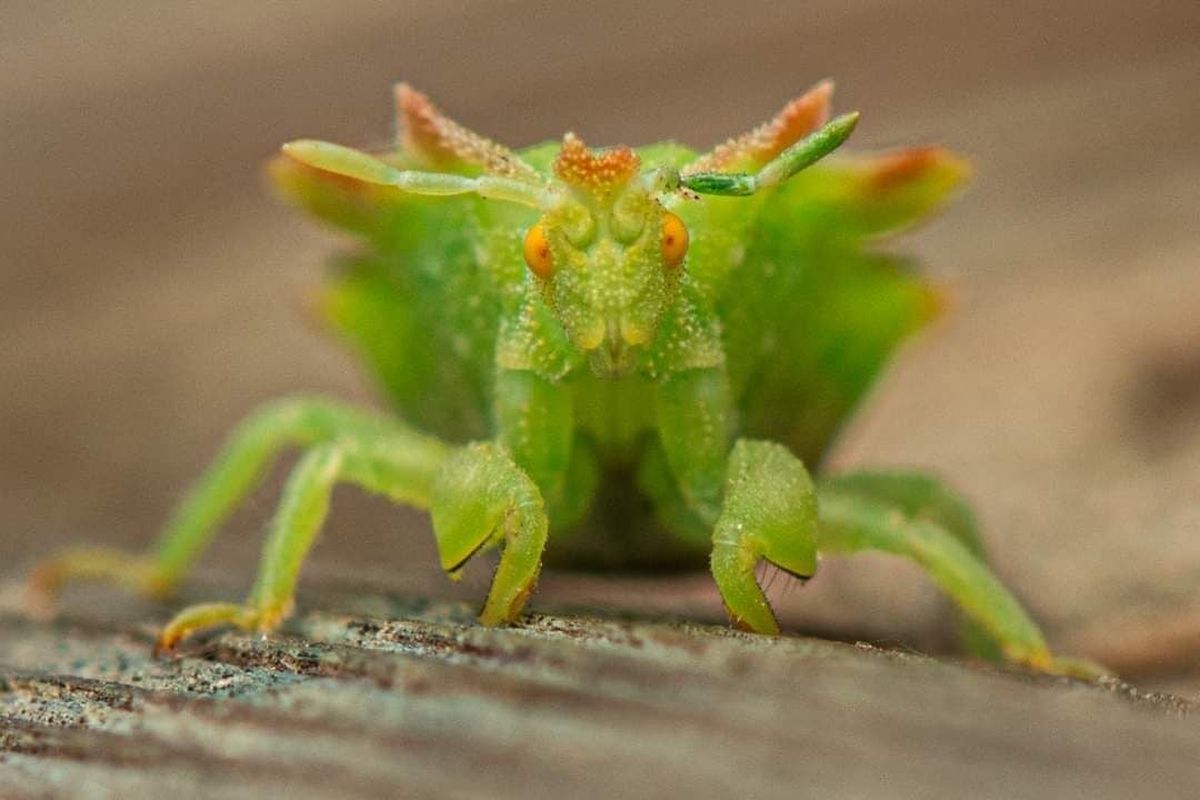Cool Critters: Nature’s tiny terrors are ‘beautiful’ and bizarre

It waits with Zen-like stillness on top of a daisy. Along comes an aphid, leafhopper or bumblebee – and BAM! The tiny yet formidable killer stabs its victim with lightning-fast speed.
What happens next is among the more morbid mealtimes that occur in nature.
Despite being less than a half-inch in size, the ambush bug lives up to its mighty name. Unseen and deadly, they’re out there waiting for their next meal to arrive. Of the 30 or so species in the United States, several are found in Eastern Washington, according to Washington State University entomologist Richard Zack, although it’s hard to know the exact figure because some species are similar in appearance.
Ambush bugs are a subfamily of the Reduviidae family, commonly known as the assassin bug, he explained.
Appearance-wise, “they really are beautiful insects,” he said.
Nonentomologists, however, might find them quirky, comical or downright bizarre.
About the size of a shelled peanut, ambush bugs are anything but dainty. Their chunky, angular bodies appear to carry a shield of spiky armor on their upper backs. Two knobby antennae protrude from their heads. Their dramatically large front legs are shaped like lobster claws, which they use to snatch and hold prey. Oh, and some species have red eyes.
A cross between a gargoyle and Shrek, perhaps?
Many ambush bugs are greenish-yellow with dark mottled patches or bands. Yet their colors can vary depending on the color of common flowers in their environment, according to the Missouri Department of Conservation’s online Field Guide on land invertebrates.
“It’s not clear whether individual ambush bugs change color like chameleons (and some crab spiders) to match the plants they’re resting on,” the authors state, “or if they simply move to plants whose colors happen to match their bodies.”
Either way, the insect often lies low on the plant’s flowerhead.
“They use their coloration and broken patterns to blend in on the plants on which they sit and wait for their prey,” Zack said.
While lying in wait, let’s say a wasp comes along seeking a quick sip of nectar. The ambush bug captures the wasp in its large forelimbs and pierces it with its beaklike mouthpart. Through that same mouthpart, the bug injects a lethal toxin to liquify the wasp’s innards. Next, it sucks the dissolved viscera from its prey’s body, a little like sipping soup from a straw.
Hollywood’s Hannibal Lecter, who once feasted on his victims, would be envious.
Luckily, ambush bugs want nothing to do with humans. Although they feed on many insects harmful to gardens and crops, they can also snag beneficial pollinators such as bees and butterflies, Zack said.
Even so, in the grand scheme of nature’s dog-eat-dog world, “they are not common enough to be of consequence,” he said.